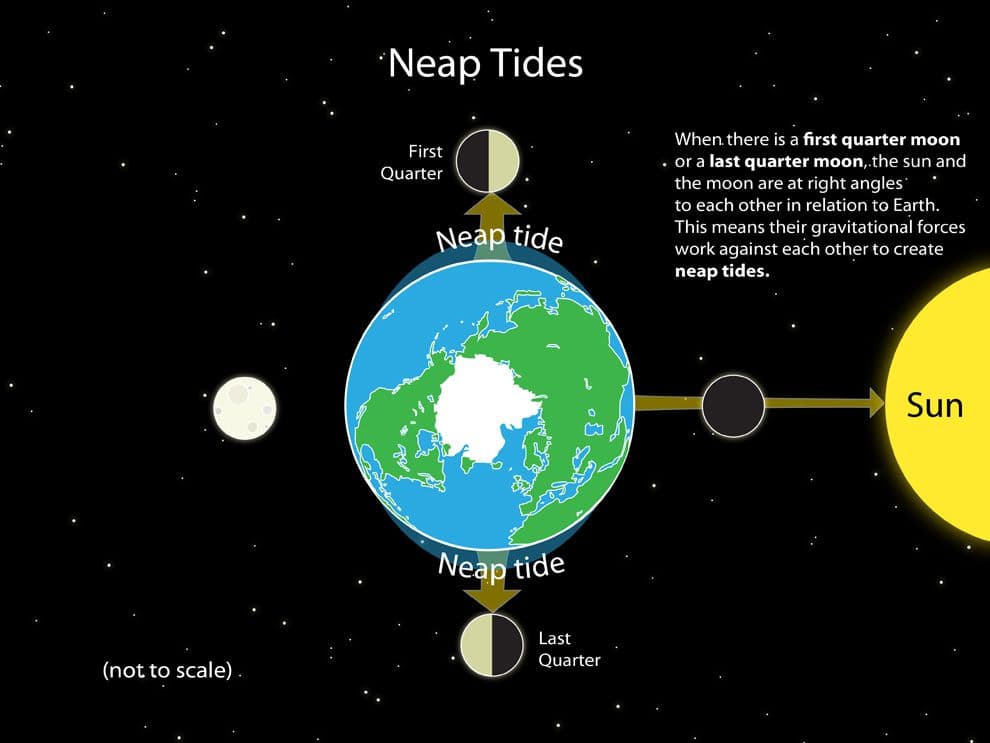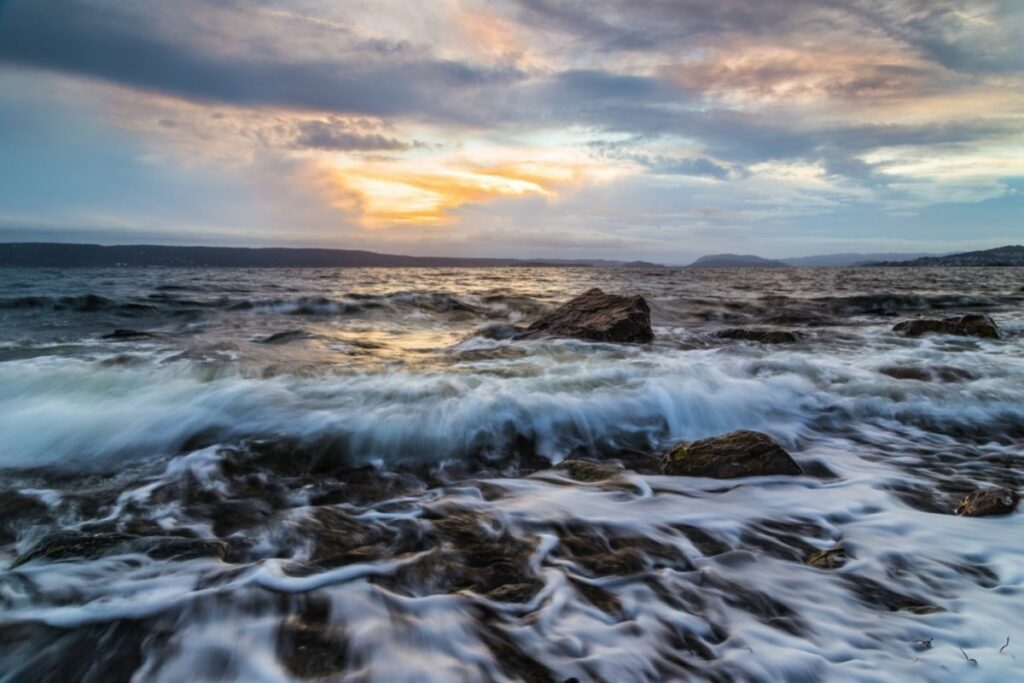Down on the docks, a lot of different phrases and words get thrown around: port, starboard, fairway, lanyard, gunwale, tides.

Trying to keep up and learn all of these different important maritime terminologies can be tricky, but luckily, we’re here to help.
One such term you may come across but not know about is neap tide. What is a neap tide and what does it do?
Here, we are going to find out!
A Quick Note On Tides
Before we dive into neap tides, we want to make sure that we are all on the same page about tides themselves.
Tides are caused by the gravitational pull of the moon and sun on Earth’s oceans and seas. Both are working to pull the ocean towards them, but the moon’s pull is generally stronger because it is closer.
The sun does have a high gravitational pull due to its mass, but it is further away and less effective on our oceans.
So, our oceans are pulled towards the moon, making all the oceans on our Earth bulge towards the moon at all times while the Earth rotates – that is why we have high tides and low tides as the oceans are constantly being pulled and falling back from the Moon and Sun.
The Sun does help balance this, pulling against the Moon’s pull, just not as effective.
However, twice a month, the moon and sun align and create a very strong pull towards the same direction – and that is where we start to see the differences between neap tides and spring tides.
What Is A Neap Tide?
A neap tide is a tide that occurs when the moon and sun are positioned at right angles to one another.
There are two types of tides that occur due to the Earth’s rotation. As the Earth rotates, the oceans bulge and contract as the moon aligns with the Sun and moves away again.
Because the pull of the Sun and the moon are no longer working against each other when they align, this causes the bulge of the ocean to be stronger and causes the tide levels to rise and fall more dramatically.

However, when the moon’s gravitational force is battling the Sun’s because the two are no longer aligned, they both are trying to pull the ocean in different directions.
This causes the ocean’s rises and falls to be less dramatic. This is when we experience a neap tide.
How Often Do Neap Tides Occur?
So to answer the question of how often neap tides occur we have to highlight that neap tides refer to the period when the distance between the high tide mark and the low tide mark is at its shortest. Neap tides happen twice every lunar month, so they occur all year round and always seven days after a spring tide.
To visualize the moon and sun’s position during a neap tide, draw a circle in the center of a piece of paper to represent Earth. Directly to its right, draw a small dot to symbolize the moon.
Directly below the Earth, draw a larger circle that represents the Sun. This is when we experience neap tides.
You can also turn the image over to have the moon to the Earth’s left – this is also when we experience neap tides, and why they occur twice a month as the moon rotates the Earth.
Neap Tides vs Spring Tides
Spring tides are another kind of tide closely connected to and often confused with neap tides. Spring tides’ name actually has nothing to do with the season.

Instead, they refer to how the tide seems to ‘spring forth’ twice each lunar month. For this reason, they are also known as ‘King Tides’
The difference between spring tides and neap tides is that neap tides happen during different periods of the lunar month.
Although both tides occur twice a lunar month, neap tides come seven days after a spring tide and occur when the sun and moon are at right angles to one another.
During full moons or new moons, tidal ranges are larger – so high tides are higher, and low tides are lower. This is because the moon, Earth, and the Sun are all in near alignment and this gravitational pull causes oceans to bulge more than usual.
During this bulging period, spring tides occur. After a week, the sun and moon are back to being at right angles with one another so the tides stop bulging and return to being neap tides.
Do Neap Tides Have Bigger Waves?
Those who love swimming and surfing should always be aware of what causes larger waves. So, do neap tides cause bigger waves?
Unfortunately, tides do not have any effect on the size of waves. So, no, neap tides do not produce larger waves.
If you want to surf, then you will need to look for other factors like wind speed, wind direction, and duration.
This is because larger waves are caused when the wind transfers energy into the waves as it blows, allowing them to grow and grow until they are very large.
So, fast winds can cause large waves but so can long-lasting blows of winds that go on uninterrupted.
The general rule of thumb when it comes to waves is that the faster the wind, the longer it blows, and the farther it blows, the larger the waves will be.
Conclusion
So, now you know about neap tides!
They are the tides that occur when the moon and sun are not aligned, meaning that the distance between the high tide mark and low tide mark is at their shortest.
Because they are dependent on the position of the moon, neap tides occur twice every lunar month and can occur during any month and season, all year round.
Spring tides are the complete opposite. While they also occur twice every lunar month all year round, they happen when the moon and sun are aligned and create a much stronger gravitational pull in the same direction.
This means that high tides are high and low tides are lower.
Despite this, both tides are perfectly safe to swim, surf, and sail in.
- Types of Gas Carriers as per IGC Code – April 22, 2025
- Wind-Assisted Propulsion Systems (WAPS): A Game Changer for Maritime Decarbonization – February 6, 2025
- 10 Boat Salvage Yards in California – January 25, 2025




